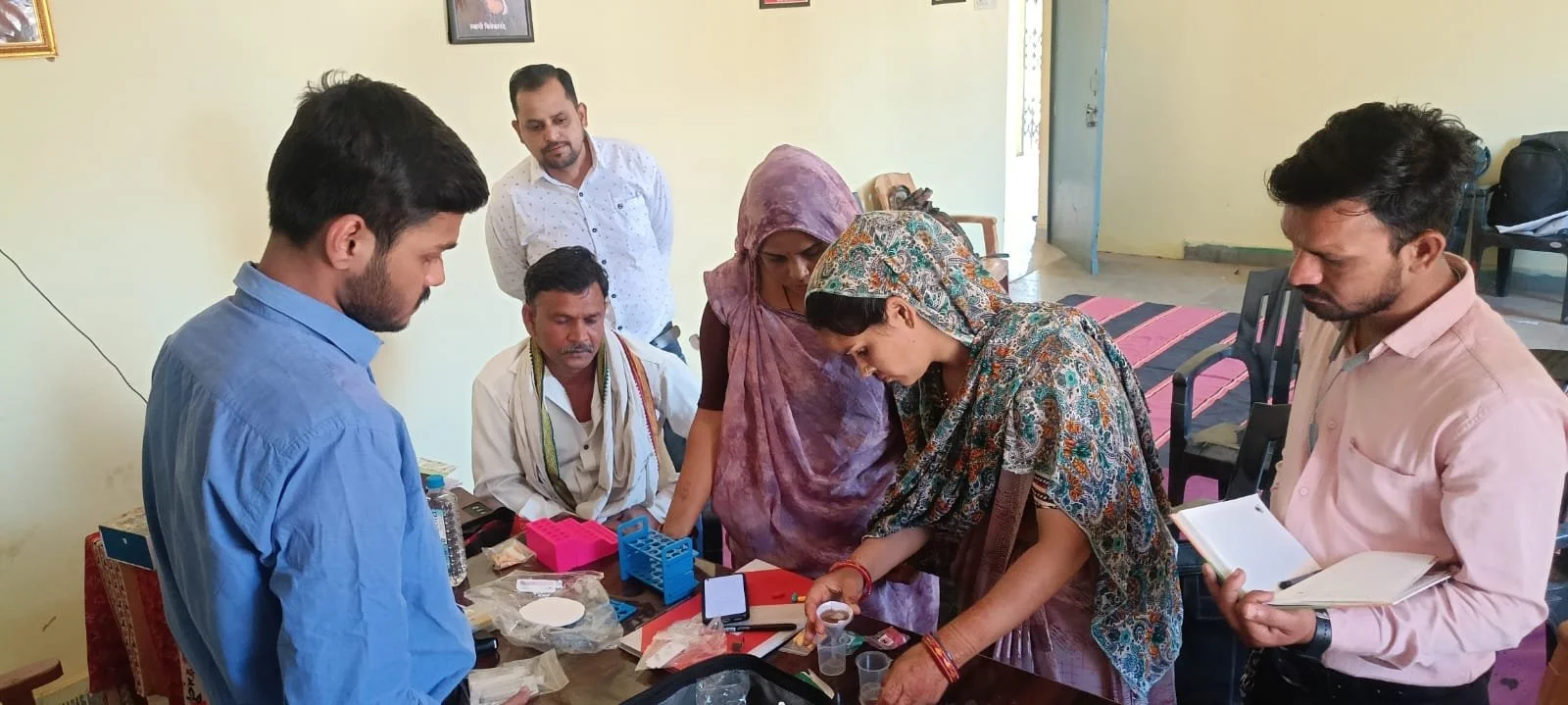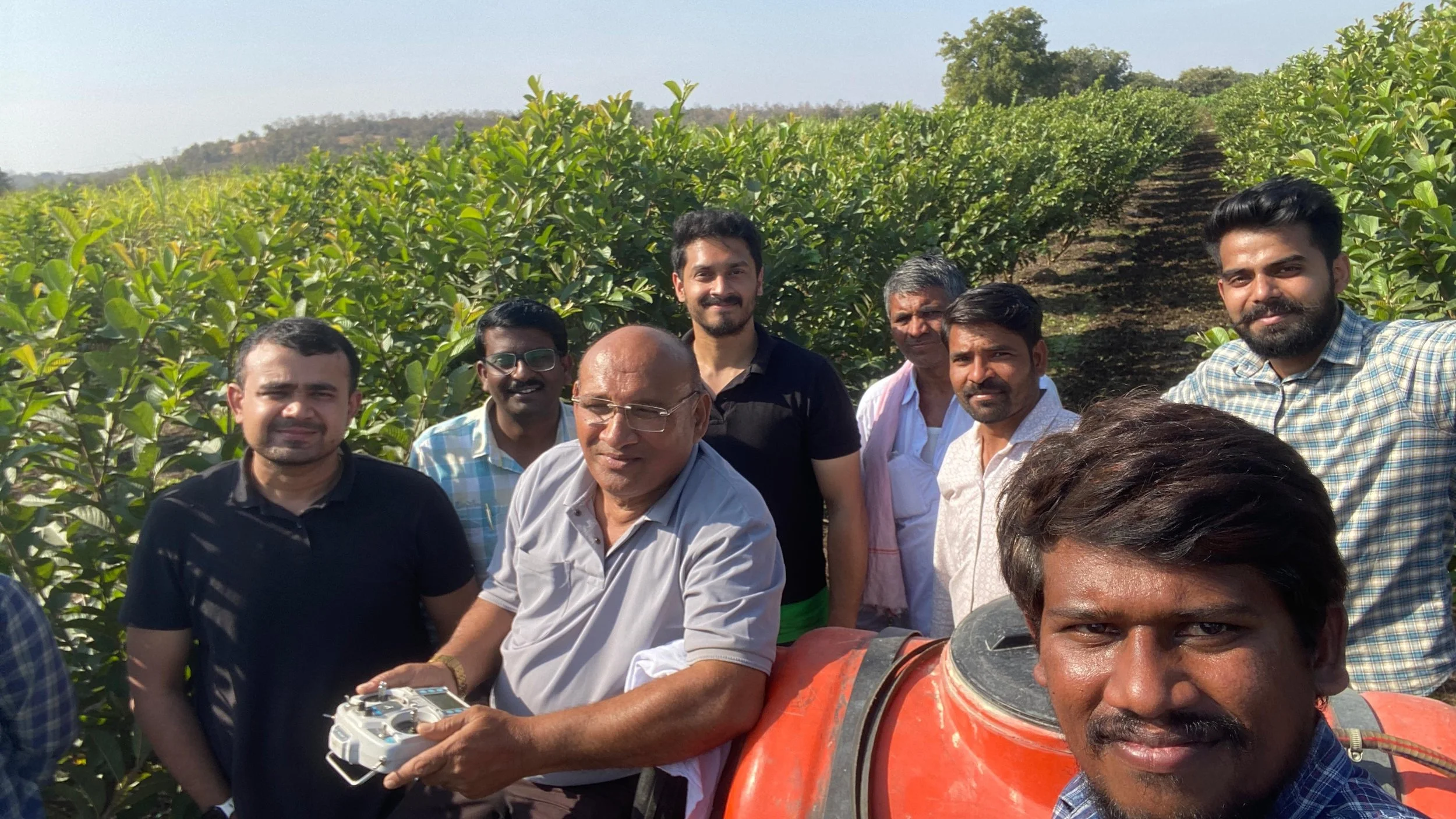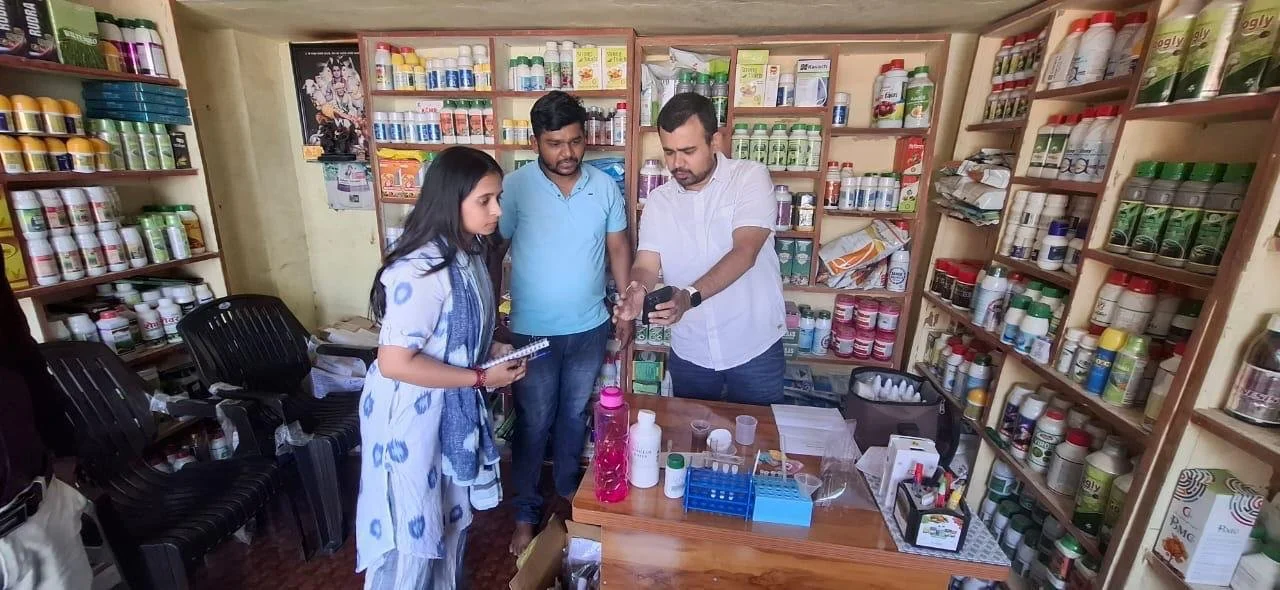Field-Tested to Market-Ready
A practical playbook to move Indian agri-startups from proof to scale
As India’s startup landscape matures, a quieter debate is gathering pace over how young companies are nurtured. Incubators, traditionally associated with turning lab ideas into usable products, are increasingly overlapping with accelerators, which specialise in compressing go-to-market and growth. Founders and investors describe a broad, dynamic support system in which roles converge, highlighting the value of sharper navigation. Nowhere is the distinction more consequential than in agriculture, where adoption hinges on evidence, price discipline and trusted buyer relationships rather than marketing polish or pitch - day applause.
Technology Partner Arogyam Medisoft training an Agri-Entrepreneur that has purchased the Soil Sathi Soil Testing Solution in Dhar, Madhya Pradesh
In the startup context, incubation is the scaffold that takes an idea or raw prototype towards a repeatable, fundable business. Strong programmes pair mentorship with access to labs or workspaces, regulatory and intellectual property fundamentals, early customer discovery and funding through grants. The purpose is survival and readiness, de-risking problem - solution fit, and proving that the core technology does what it claims in the real world. Globally, the most effective incubators sit within university - industry corridors such as Boston, the Bay Area, Eindhoven and Tel Aviv, where tech-transfer offices, proof-of-concept funds and corporate challenge calls create steady demand for solutions.
In practical terms, incubation begins at the Idea-to-MVP stage and aims to validate the problem and solution while building the company’s basic systems. It typically runs longer, relies on grants or pre-seed capital, and counts success in MVP readiness, first pilots, IP filing and a capable team. Acceleration picks up from MVP through product-market fit and early revenues, focuses on scaling sales and opening markets, is time-bound to a few months with clear milestones, aligns with seed to Series-A readiness, and is judged by revenue growth, partnerships and repeatable go-to-market motion. The differences may sound academic but for founders dedicated to building an impactful venture, they are not.
Accelerators usually step in when a venture already shows traction, pilots, users or early revenue, and compress the next set of milestones into a time-boxed programme. The emphasis is commercial: pricing, sales operations, distribution partnerships and follow-on capital. Brands such as Y Combinator, Techstars and THRIVE tend to specialise by stage and sector, often tying cohorts to anchor customers who can buy at the end of a pilot, not merely endorse it. The clock speed is faster, the milestones sharper, and the yardsticks more explicitly tied to revenue growth and conversion.
Over the past decade India has assembled a broad base of incubation through public platforms - Atal Incubation Centres under NITI Aayog, R-ABIs under RKVY-RAFTAAR, BIRAC’s BioNEST network, DST’s NIDHI TBIs and MeitY’s TIDE centres, complemented by academic hubs across IITs, IIMs and agri-universities, as well as corporate venture programmes. Venture funds have layered accelerator-style cohorts on top, backing specific themes and stages. While the broad scope is a strength, overlaps are common. Idea-stage teams find themselves in accelerators while revenue-stage startups sit through basic incubation modules. Selection criteria vary, evidence standards are uneven, and too few programmes start from what buyers will procure.
On-Farm demonstration of Farm Sathi eTractor solution in Nanded, Maharashtra
This gap is most visible in agriculture, a sector that is heterogeneous, price-sensitive and trust-driven. A cotton harvesting tool in Maharashtra is not the same as an apple quality sorter in Himachal Pradesh or a soil testing solution in Bihar. Adoption depends on proof in local conditions, service availability and farmer economics. Market-focused accelerators flip the sequence by beginning with demand. Problem statements are co-created with buyers - Farmer Producer Organisations (FPOs), processors, retailers, insurers, input OEMs and state missions, and evidence standards are published upfront, whether on expected yield uplift and payback periods, residue limits, service uptime or unit-economics bands.
Under this approach, pilots are designed with matched controls and seasonality in mind, run on real farms and independently verified. Pricing, financing and post-sale service models are built in rather than applied upon. Pay-per-use and annual maintenance contracts are planned with rural operators from day one, credit and guarantees are aligned to cropping cycles, and warranties or uptime SLAs buy down risk for both farmer and buyer. The effect is two-sided confidence: founders know what will trigger procurement whereas procurement teams see comparable data, not incomparable claims.
A next-generation programme in India would organise cohorts around concrete use-cases rather than technology labels: onion storage loss reduction, micro-irrigation scheduling, chilli grading, grape shelf-life extension, or biological farm inputs, each linked to named anchor customers with pre-agreed pilot sites, acceptance criteria and purchase pathways. Validation would be standardised through common checklists for trial design, sample sizes, statistical thresholds and farmer economics, with interoperable data and dashboards that procurement teams can compare. Service capacity would be built through local entrepreneurs and FPOs trained for installation, maintenance and hire-and-use delivery under guaranteed SLAs, so scale does not stall after the demo day.
Ensuring on-ground deployment and adoption of the Soil Testing technology in Nashik, Maharashtra
Policy can accelerate the shift with safe-harbour guidelines for field pilots, streamlined permissions for testing and public registries of validated solutions. Corporates can publish problem statements and evidence thresholds to signal demand. Donors can fund independent verification and shared infrastructure, including trial farms and data commons. Incubators, for their part, can double down on deep technical and regulatory readiness, while accelerators are judged squarely on procurement outcomes and repeat sales rather than brand theatre.
The bottom line is straightforward. Incubators help ventures survive and learn; accelerators help them sell and scale. India has plenty of both, what it needs now are more market-focused accelerators, especially in agriculture, that start from demand, validated in the field and reduce adoption risk for smallholders and buyers alike. Done well, this shift can turn promising pilots into dependable practice at scale, translating ambition into measurable outcomes across the farm-to-fork chain.
About the Author
Vikas Mishra,
EIP Business Director India
Vikas is a seasoned Innovation Management professional with over a decade of experience in cultivating strategic partnerships, empowering startups, and spearheading advocacy efforts primarily in climate and agriculture.




